Latest Shots Tips: How to Capture the2025 Rare Twin Meteor Showers
Two meteor showers — the Southern Delta Aquariids and Alpha Capricornids — both peak on July 29–30, 2025, lighting up the night sky with dazzling fireballs and streaks of light. With July and August delivering back-to-back celestial shows, this rare twin meteor shower event is a true dream for skywatchers and night photographers alike.
However, they also provide a perfect opportunity for creating stunning photographs. To watch meteor showers you need to know the best time that you can view them. Also, to photograph meteor showers you need to have the right tools that can capture the night sky with minimal disruption.
This comprehensive guide focuses on all the important information you need to know before creating your first meteor shower image.
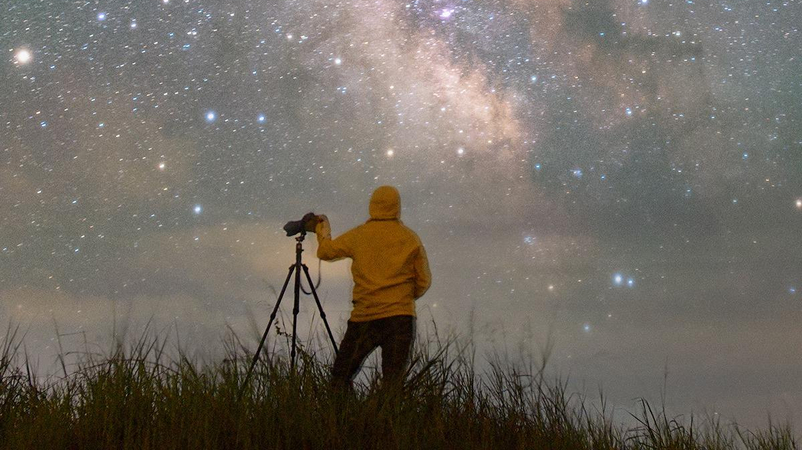
Part 1. What Are Meteor Showers?
Meteor showers paint the sky with brilliant streaks of light every year. In August, it’s the Perseids, in December, it’s the Geminids. In April, we have the Lyrids meteor showers and so forth. Meteor showers are always visible to the naked eye.
Meteor showers come about when the earth goes through the debris of the comets circling the sun. These space particles are usually as small as grains of sand or small pebbles entering our atmosphere with tremendous speeds that are between 25,000-160,000 miles per hour. Their high-speed entry results in friction that gives the amazing streaks of light that we see on the ground.
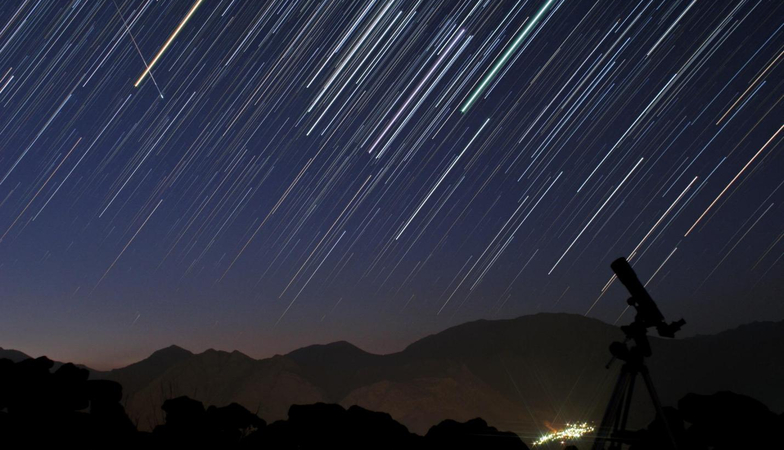
Unlike random meteors that can appear anywhere in the sky, shower meteors are associated with a specific region of the sky, marking radiants in constellations from which they appear. Each shower is named after the constellation it is associated with.
Part 2. Best Time to Watch Twin Meteor Showers 2025
Major Annual Meteor Showers to Look Out For
A meteor shower is a celestial event where a large number of meteors are observed to radiate from one point in the sky. The astronomical calendar has many significant showers that are spectacular.
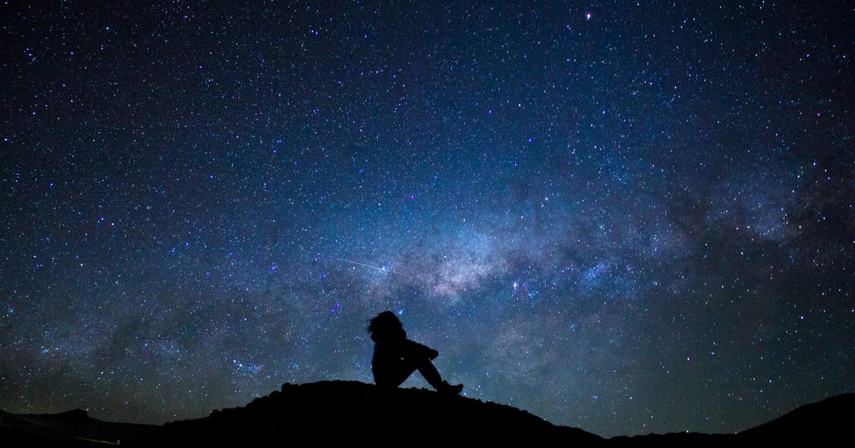
One of the meteor showers that are most dependable and prolific is the Perseids shower which peaks around mid August. It occurs every year and has a yield of about 50 to 100 meteors every hour given the right conditions. The best feature of the meteors is that they are fast and leave glowing trails that last for many seconds.
Another sublime meteor shower is the Geminids which occurs in December. Many people tend to view it as the best meteor shower of the year because of its high yield and bright colorful meteors too.
The Leonids meteor showers occur in November. This type produces meteor storms which contain thousands of meteors. Other meteor showers include:
- Lyrids which occur in April
- Eta Aqariids which occur in May
- Orionids which occur in October
Ideal Conditions for Viewing
The best time to watch meteor showers is usually in the pre-dawn hours after the constellation is overhead. Normally, meteor showers start around 10 PM, but the peak shower activity period is between midnight and dawn when the troposphere is most quiet and light pollution is at a minimum. Together with the phases of the moon, during which the moon is new and is positioned to provide a darkened sky, the fainter meteors are more visible.
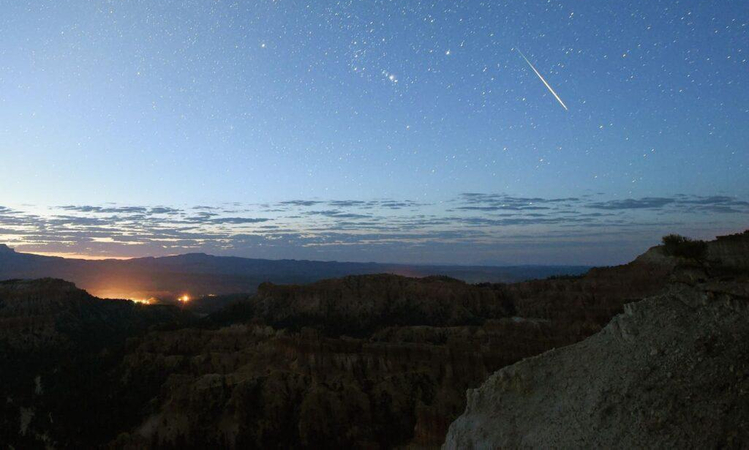
The selection of a location strongly determines the experience of a viewer. Rural locations are preferable as they are not hindered by the city’s light-fog. In contrast, watching stars in towns is inefficient as a greater number of meteors will be lost to light pollution.
Tools to Help You Plan
A modern meteor shower planner can take advantage of modern astronomy applications like SkySafari, Star Walk, and PhotoPills. These tools offer real time sky maps alongside meteor shower calendars with calculation and viewing time apps for your specific location. Such tools can also predict peak activity periods, radiant positions, and even moon interference levels.
Additional webpages like the American Meteor Society and meteor shower guides by NASA offer hourly rate predictions alongside best viewing angle. These webpages also provide real time viewer reports through social media making it easier to gauge shower activity and make global connections with enthusiasts.
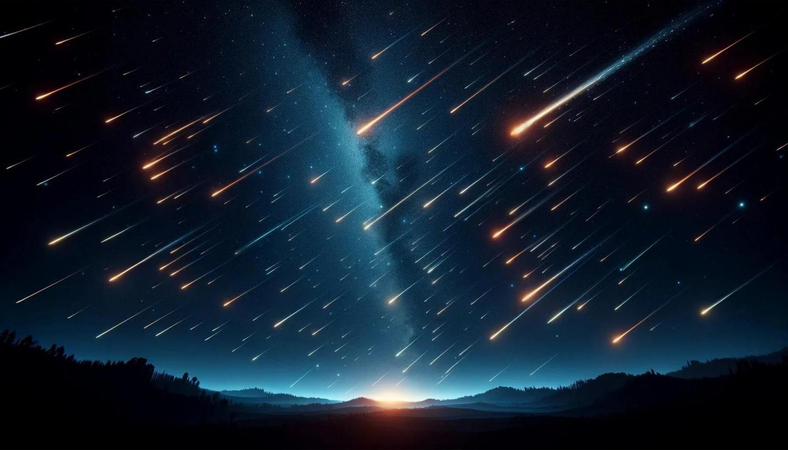
Part 3. How to Photograph August 2025 Meteor Showers
Astrophotography gear for beginners
To Photograph meteor showers specific equipment that is capable of capturing faint light over time intervals is needed. For the best results, a mirrorless camera or DSLR with manual control is a requirement. Night sky photography requires the kind of equipment that allows full control of the aperture and the shutter.
A sturdy tripod is perhaps the most important accessory for meteor photography. This is due to the fact that exposures usually last from 15 seconds to several minutes. Camera movement during these long exposures will blur the stars. The end result? Unusable images.
For a greater chance of capturing meteors, a wider field of view is ideal. Thus, a 14-35mm (full-frame equivalent) wide-angle lens is preferable. It is also ideal to have fast lenses. This can gather light more easily and reduce the chance of star trailing during exposure. So, an aperture of f/2.8 or lower is best.
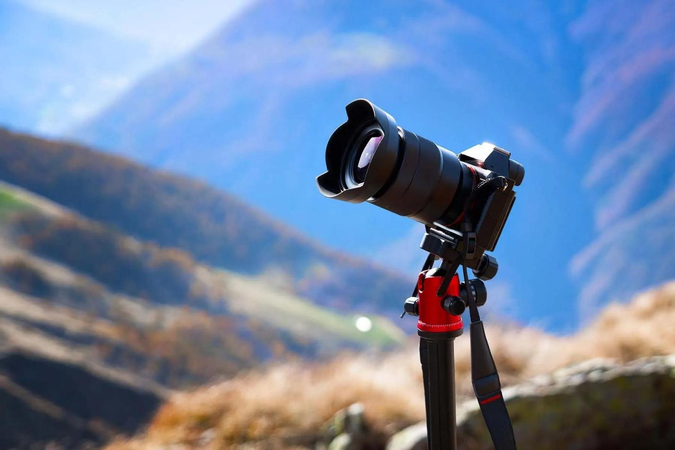
Camera Settings and Techniques
To do meteor photography, the configuration of ISO sensitivity, aperture and exposure time has to be balanced. Begin with ISO 1600-3200, aperture wide open (f/2.8 or faster), and exposure time of 15-30 seconds.
These are optimal settings that prevent star trailing and have sufficient sensitivity to capture meteor streaks. Manual focus set to infinity provides sharp stars. Use live view magnification to fine-tune focus on bright stars and distant lights.
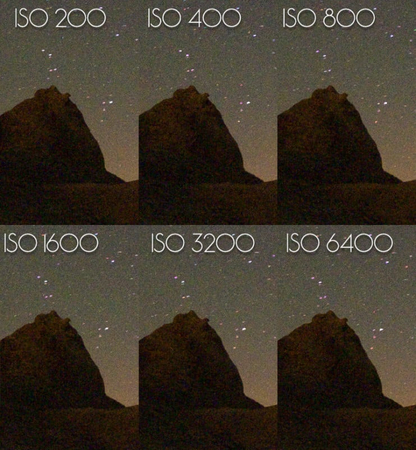
You also have the capability to automatically take a sequence of images throughout the night. The continuous shooting modes and intervalometers increase the probability of capturing meteors to the maximum.
Many photographers utilize shooting intervals of 2-3 seconds. This provides full coverage during the meteor shower peak period. This method also enables the creation of timelapse video meteor falls over hours in a minutes of video sequence.
Location and Setup Tips
The optimal shooting location should be a dark sky that is free from light pollution. The foreground should have interesting elements to increase the compositional value of your meteor photographs. Such places should be scouted during the day. Do so to plan safe access routes and the interesting features of the landscape that will add value to your photographs.
Stay away from places that are significantly affected by light. Also, take into account the position of the moon. This will help reduce unwanted light while still providing enough to expose the foreground elements.
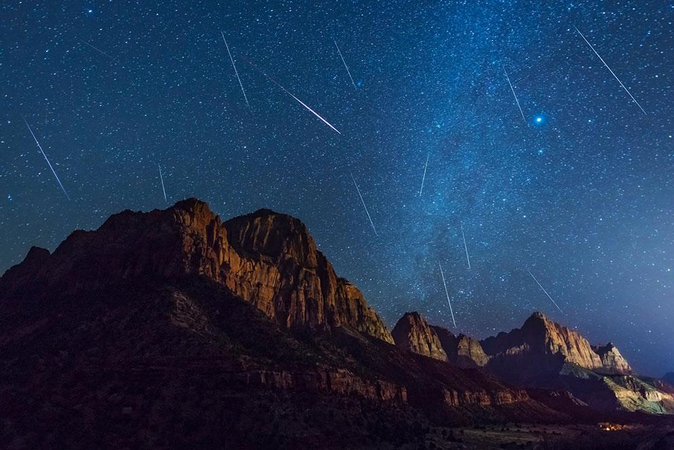
Position your camera so that the radiant constellation is framed at 40-60 degrees from the center of the composition. At this angle, the meteors will be at their maximum beauty and plenty of sky will be included to provide full coverage.
Transform the meteor streaks from mere features into artistic compositions by telling the story of your observation experience. This can be achieved by including well-known landscape features or trees in the foreground to give scale and context.
Part 4. Editing Meteor Shower Photos with HitPaw FotorPea
Start with the "Denoise Model" to Combat High ISO Noise
The high ISO photography required to capture meteors is bound to introduce digital noise. This reduces the quality of the photograph and hides the fine details in meteors and star fields.
HitPaw FotorPea has a Denoise Model feature for filtering out noise while retaining vital details of the celestial bodies. You can use the tool to separate the real contents of the image and the undesired artifacts. This keeps your stars sharp and meteor tracks look natural.
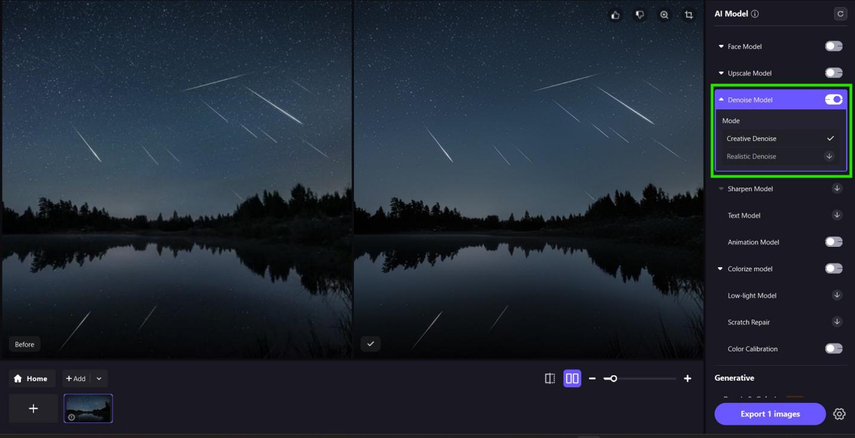
Utilize the "Low-light Model" for Brighter, More Detailed Skies
The problem with night sky photography is that the photos are always underexposed. This makes the stars and gradients of the sky too dim to be visible in detail.
HitPaw FotorPea’s Low-light Model brightens dark images using advanced algorithms. This feature saves natural color balance and avoids overexposing brighter objects, such as meteor streaks or bright stars.
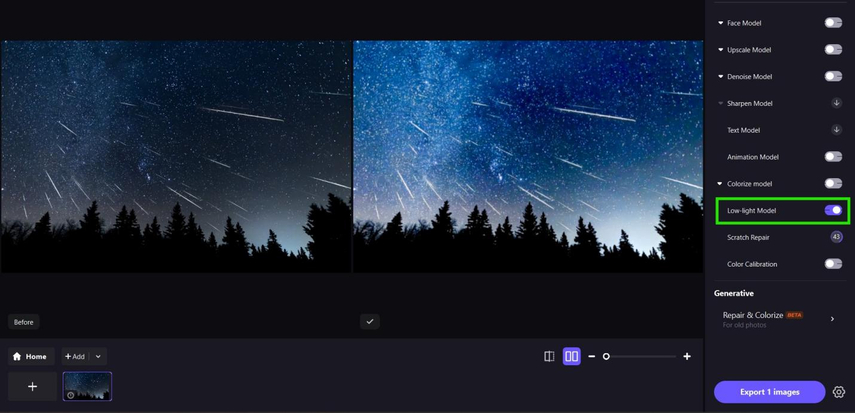
Employ the "Colorize Model" for Enhanced Celestial Colors (Subtly!)
The meteor photographers usually only focus on specific astronomical colors. But, with the right touches, scientific images can be visually appealing too. With HitPaw FotorPea's Colorize Model, the meteor trail colors, the star colors and other atmospheric colors can be enhanced and made more vivid without being enhanced unrealistically.
The color addition AI tool improves the color differences of meteor's types. For example, some meteors may be blue, orange, white, green, and other colors because of the minerals they are made of.

Use AI Upscaling (up to 8K) to Print Large or Crop without Pixelation
Modern meteor photography often benefits from aggressive cropping to isolate striking meteor occurrences or compose wide-angle shots into compelling images. With HitPaw FotorPea's AI upscaling technology, images can be enlarged significantly, up to 8K, without the pixelation and quality issues that come with traditional interpolation techniques.
This feature is especially useful for elite meteor capture shots that need to be cropped and resized for print, as well as for meticulously resizing and cropping specific celestial images.

Refine Foreground Elements with "Object Removal" or "Background Removal"
Power lines, airplane trails, and urban lighting tend to take the natural beauty away from meteor photography. With HitPaw FotorPea, the Object Removal feature can be used to eliminate these pesky elements while keeping the natural sky textures and star patterns intact.
The Background Removal feature enables different compositional options. Use this feature to blend exceptional meteor occurrences with varying geographical features, or to create polished backgrounds for pedagogical or artistic purposes.
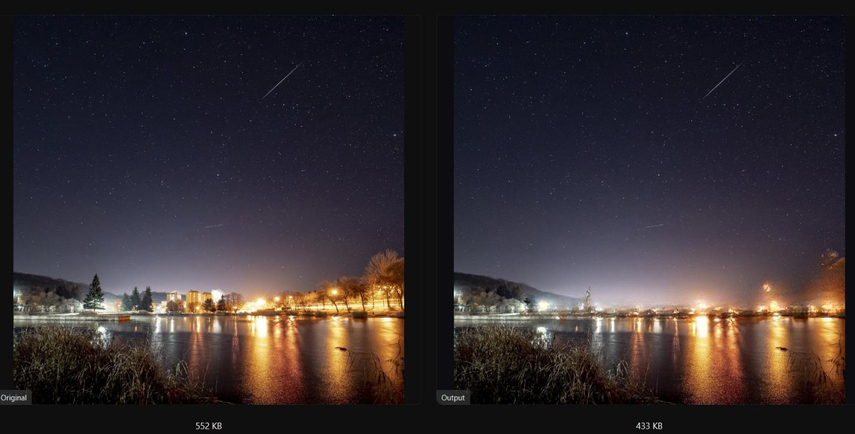
Adjust Sharpness After Denoising for Crisper Stars
After featuring photo noise reduction, any required sharpness can be added to restore clarity which is required for professional images. The sharpness adjustment algorithms of HitPaw FotorPea work best to improve edge clarity of stars or meteors without adding any form of artifact or adjustment that degrades the image.
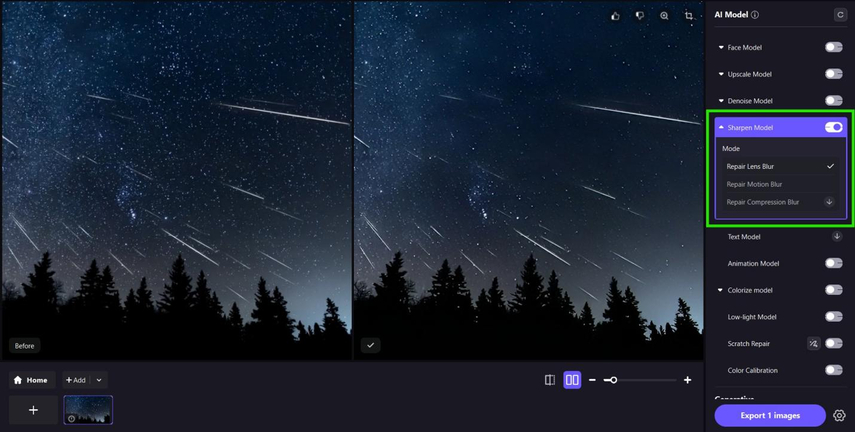
Conclusion
Meteor showers are among the most breathtaking and relatively easy-to-observe events in the sky. Understanding what a meteor shower is, when to watch them and how to photograph is essential to night sky enthusiasts.
Modern tools, like HitPaw FotorPea, can help you to make high quality meteor shower images. This tool comes with AI-powered features to make it easier for you to edit your meteor shower pictures. Are you ready to create visually stunning meteor images? Give HitPaw a go and convert your pictures into marvelous digital artworks!










 HitPaw VoicePea
HitPaw VoicePea  HitPaw VikPea (Video Enhancer)
HitPaw VikPea (Video Enhancer) HitPaw Univd (Video Converter)
HitPaw Univd (Video Converter) 
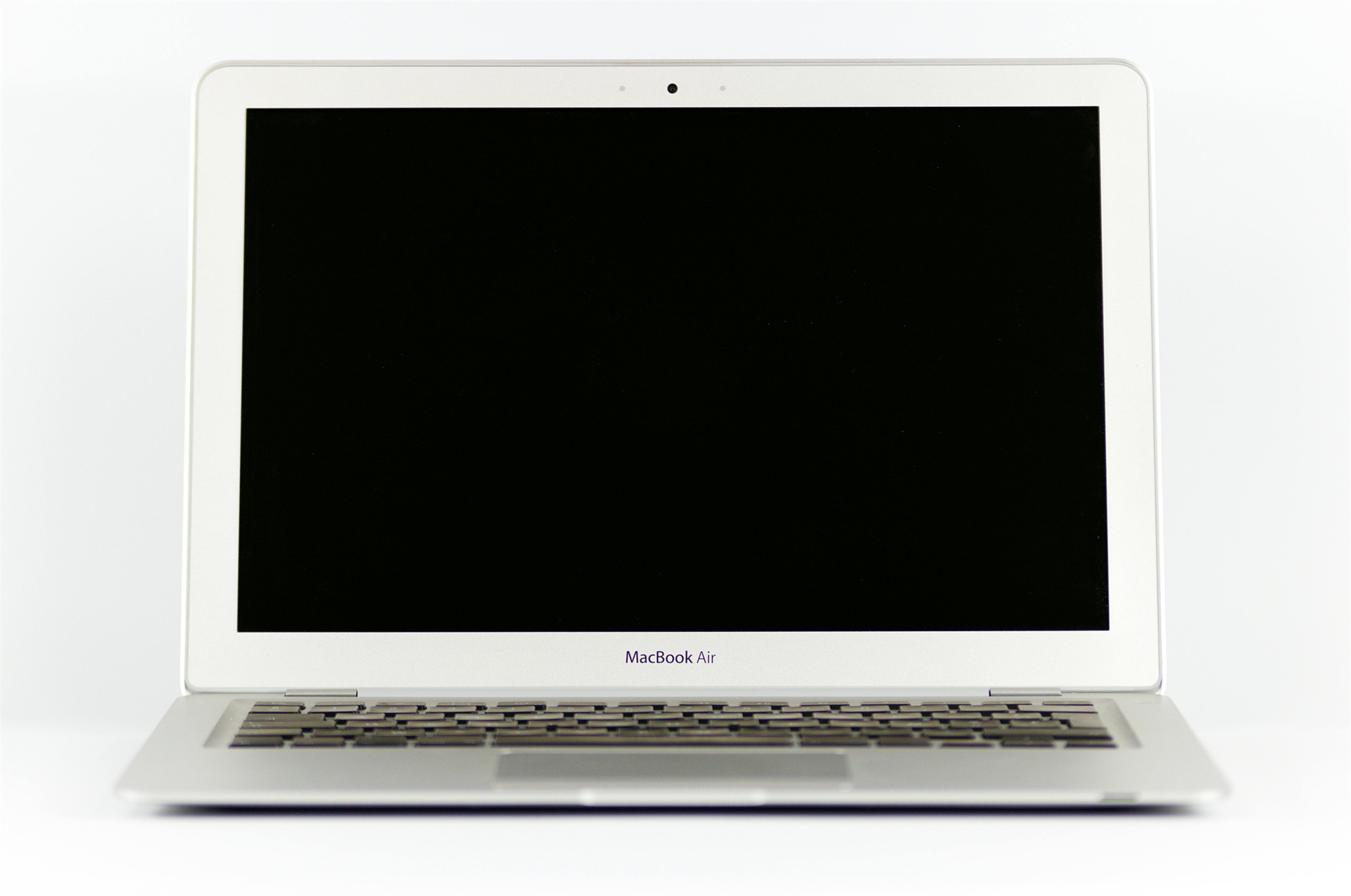


Share this article:
Select the product rating:
Daniel Walker
Editor-in-Chief
This post was written by Editor Daniel Walker whose passion lies in bridging the gap between cutting-edge technology and everyday creativity. The content he created inspires the audience to embrace digital tools confidently.
View all ArticlesLeave a Comment
Create your review for HitPaw articles